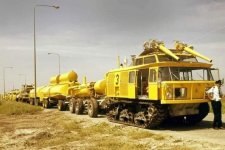- Joined
- May 10, 2019
- Messages
- 534
According to this website not all of the Hight pressure hydrants in Manhattan have been removed as we can see from the above pictures.
UnknownAt what psi is the boat supplying the pumper
High pressure systems were more than just pumping stations and dedicated water mains for fire fighting. The systems had standpipe connections for fireboats, nine fireboat tender companies, then twenty high pressure engine companies, and later, Satellite units with the original Super Pumper system. The NY high pressure systems were discontinued in 1953.They were also in lower Manhattan.
When they were being phased out and I don't remember if it was a job-wide policy or Division 1 policy not to use high pressure hydrants because they were unreliable, I think the Captain of Engine 9 sent in a report that the only hydrants on East Broadway were high pressure.
This was around '88 or '89.
High pressure systems were more than just pumping stations and dedicated water mains for fire fighting. The systems had standpipe connections for fireboats, nine fireboat tender companies, then twenty high pressure engine companies, and later, Satellite units with the original Super Pumper system. The NY high pressure systems were discontinued in 1953.
Other cities also had special units to operate on their high pressure systems with different names such Hose, High Pressure, Pipeline, and Deluge companies.
Since the Super Pumper is training with the Fireboats I am wondering if there will be dedicated locations throughout the City for the fireboats to moor and supply the Super Pumper.
The Aux Pumps at SOC are suppose to supply the Super Pumper aswell I believe.Since the Super Pumper is training with the Fireboats I am wondering if there will be dedicated locations throughout the City for the fireboats to moor and supply the Super Pumper.
Why do you think that? It certainly can work with any of the satellite units if needed.The new super pumper actually needs its own super tender

l wondered if that type stream was near impossible to mimic with these new nozzles on this unit and the new satellites.''...but does not have the punch and hydraulic knockdown of the Stang guns on the old satellites.''
